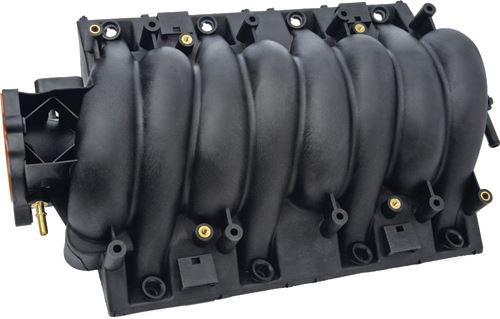Fiber sizings: Coupling agent companions
Although the primary function of sizing is to protect the fiber from abrasion damage by acting as a dry lubricant during processing functions such as weaving, sizing expert Andy Brink, business development manager at Michelman SARL (Cincinnati, Ohio), says sizings on reinforcements used in composites also contribute to adhesion at the fiber/resin interface.
Although the primary function of sizing is to protect the fiber from abrasion damage by acting as a dry lubricant during processing functions such as weaving, sizing expert Andy Brink, business development manager at Michelman SARL (Cincinnati, Ohio), says sizings on reinforcements used in composites also contribute to adhesion at the fiber/resin interface. In thermoplastics, for example, Brink says sizing can function as a reactive system that, together with coupling agents compounded into the resin, improve the mechanical properties by improving the interfacial shear strength.
One example is Michelman’s new-generation FGLASS fiber sizings, targeted for glass-reinforced polypropylene (PP), as PP composites make inroads into applications previously held by reinforced nylon. In another project, Michelman has partnered with Organic Transit (Durham, N.C.) to develop new composite solutions for glass-reinforced-fiber panels on a new and unusual bicycle. The result was Hydrosize PP2-01, a nonionic PP emulsion that is reportedly ideal for sizing glass fiber for long-fiber thermoplastics (LFTs) and sizing carbon fiber to optimize fiber/resin bond strength.
Hydrosize PA845 anionic polyamide dispersion, Michelman’s first commercial product based on its new solvent-free (hydrazine-free) chemistry, is designed for carbon fibers in high-temperature resins (see photo below) and complies with the European Union’s Plastics Implementing Measure (PIM) directive regarding plastics in food-contact applications, including appliances. The sizing is said to be a viable alternative in some applications that now use polyimide chemistry, which provides very high thermal stability but is difficult to use in both fiber coating and compound production. PA845 is reportedly much easier to process and provides high thermal stability, although not as high as polyimides, such as Michelman’s Hydrosize HP1632. Because it is inherently flame retardant and heat resistant, Hydrosize HP1632 PI dispersion is now being used as a sizing for carbon fiber that reinforces thermoplastics in aerospace applications.
Elsewhere, Evonik Hanse GmbH (Geesthacht, Germany) has developed an aqueous emulsion of nanosilica-modified epoxy resin to be used as sizing on glass and carbon fibers. Nanopox FW 404, which contains 40 percent surface-modifed SiO2 nanoparticles, can be blended with existing sizing formulations or used as an after dip, applied directly to the fiber in a very thin layer.
Because sizings are used in small quantities, the impact on cost is negligible, but the toughness and fatigue performance of the part can be improved. “We have data that show that it is sufficient to have the nanosilica particles only at the fiber/epoxy resin interface,” says Evonik senior market development manager Stephan Sprenger, who notes that at less than 1 percent by weight, the sizing results in a nearly two-fold increase in the composite’s toughness.
Related Content
-
Highly tunable, woven lattice reinforcements target automotive structures
CAMX 2023: Startup Weav3D will be demonstrating its two collaborative automotive demonstrator parts and present two conference papers.
-
Plant tour: Albany Engineered Composites, Rochester, N.H., U.S.
Efficient, high-quality, well-controlled composites manufacturing at volume is the mantra for this 3D weaving specialist.
-
Braskem demonstrates PP solutions using Weav3D composite lattice technology
Partnership combines Braskem’s polypropylene sheets with Weav3D Rebar for Plastics technology to address new structural, automotive applications requiring high-strength, lightweight material solutions.

















